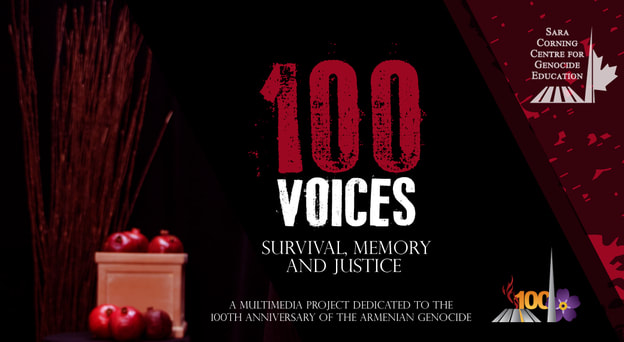
“Understanding Atrocities is a wide-ranging collection of essays bridging scholarly and community-based efforts to understand and respond to the global, transhistorical problem of genocide. The essays in this volume investigate how evolving, contemporary views on mass atrocity frame and complicate the possibilities for the understanding and prevention of genocide.” It is published as part of the Arts in Action series, which “focuses on illuminating, promoting, or demonstrating the fundamental significance of the arts, humanities, and social sciences to public well-being and contemporary society.”
Murray, the editor of the book, is associate professor of history in the department of humanities at Mount Royal University in Calgary, Alberta.
Sarkissian’s chapter, titled “Benefits and Challenges of Genocide Education: A Case Study of the Armenian Genocide,” explores the benefits of genocide education and the challenges faced when advocating for its implementation. It uses the Armenian Genocide as a case study. An exploration of the history of genocide curricula helps to contextualize the issue. The chapter examines the Toronto District School Board’s efforts to develop and implement Canada’s very first high school senior-level course dedicated to genocide education. A review is also given of Holocaust education in the United States, which was a catalyst for the implementation of curricula on other genocides in the US. The focus of the chapter is primarily the Armenian Genocide and the challenges involved in teaching about it due to the policy of denial pursued by the government of Turkey.
Understanding Atrocities can be preordered through Amazon. For more information, click here.
Sarkissian holds a BA Hons. in history and an MEd from York University and a BEd from Trent University. He holds principal’s qualifications and teaching certifications in the primary, intermediate, and senior divisions.
He has conducted extensive research in the field of genocide and human rights education and serves as a board member of the Armenian Legal Centre for Justice and Human Rights. He is vice-principal of ARS Armenian Private School in Toronto and an occasional, part-time professor in the department of General Education and Liberal Studies at Centennial College. He has over 15 years of experience in leadership positions in Canadian-Armenian organizations.
Please refer to the table of contents below for information on the list of contributors and topics.
1. Atrocity and Proto-Genocide in Sri Lanka
Christopher Powell and Amarnath Amarasingam
2. Finding Global Justice Locally at Sites of Atrocity: The Case for the Srebrenica-Potočari Memorial Center and Cemetery
Laura Beth Cohen
3. Troubling History, Troubling Law: The Question of Indigenous Genocide in Canada
Adam Muller
4. The Benefits and Challenges of Genocide Education: A Case Study of the Armenian Genocide
Raffi Sarkissian
5. “We Charge Genocide”: A Historical Petition All but Forgotten and Unknown
Steven Leonard Jacobs
6. “A Tragedy to be Sure”: Heteropatriarchy, Historical Amnesia, and Housing Crises in Northern Ontario
Travis Hay, Kristin Burnett, and Lori Chambers
7. Remembering Them All: Including and Excluding Atrocity Crime Victims
Andrew R. Basso
8. Helping Children Understand Atrocities: Developing and Implementing an Undergraduate Course Titled War and Genocide in Children’s Literature
Sarah Minslow
9. Thinking About Nazi Atrocities Without Thinking About Nazi Atrocities: Limited Thinking as Legacy in Schlink’s The Reader
Lorraine Markotic
10. Atrocity, Banality and Jouissance in Performance
Donia Mounsef
